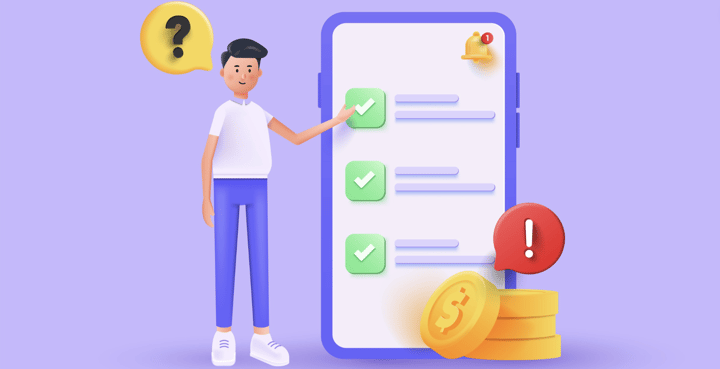Procure to Pay Guide to Secure Payments
Aug 2022

The procure-to-pay process can’t simply rely on trust between the Payee and Payer. A secure, information exchange process is required – one that reduces the risk of fraud, overpayments and reputational risk to all parties.
In the UK in 2020 alone, £40.8 million was lost and never returned due to advanced payments of goods or services that were never received. Additionally, a staggering £81.9 million was lost for invoice payments made to a legitimate payee but went to another account.
Procure to Pay is an important process, so much so that the European Payment Council suggests key control measures, such as the approval of payment and transaction data, to mitigate this risk.
Let’s see what the procure-to-pay process is and how you can protect your company from fraud and overpayment errors.
What is the Procure to Pay Process About?
Procure to pay, purchase to pay or P2P is the entire process of purchasing goods and services that a company needs to do business. The Payer expects that the Payee will deliver goods and/or services on time at the agreed quality and price. The purpose of the process is to ensure the quality and continuity of core business supply without any disruption.
The P2P process should secure procurement within the budget and compliance with policies and regulations. And the final goal is to prevent procurement from non-contracted suppliers that might impact the core business’s price and quality.
Procure to Pay Step-by-Step Guide
Procure-to-pay is defined as a 9-step process. Find below a simplified guide with all explanations and how to implement it efficiently.
Vendor selection
You need to identify goods and services that are necessary for your business. Based on that, a Preferred Supplier (PS) should be selected for each to guarantee the best value to your business (a mix of price and quality). All the terms, including quality specification, unit price, and delivery terms, should be part of an agreement between the Buyer and the Supplier.
Purchase Order
The process owner or Procurement officer should initiate a Purchase Order (PO) and obtain approval from a superior before the order is placed to the PS.
When a PS is contracted, PO should contain all terms from the agreement. Otherwise, PO should refer to an offer from a potential supplier. Big companies require 1-3 bids and recommend the one with the best overall value.
This step recommends checking if the requested amount fits the budget.
Order and Receiving
Once the PO is approved, the order is sent to the supplier that needs to deliver on-time goods or services with the required quality, followed by a delivery receipt.
Any deviation from the agreement or delivery offer should be mutually resolved before payment.
Payment
The Payer should proceed with payment by the payment date, based on the three-way matching:
- Approved PO – description, quantity, cost, and terms of the supplier;
- Receipt – description and quantity;
- Invoice – description, quantity, cost, and terms of the supplier.
Any deviation between these three documents should be checked with all relevant people included in this process and closed off.
Protect Your Payments with an Easy-to-use AI tool
Your financial team doesn’t have to rely on a heavily manual process for managing payables risk. Xelix has created an AI tool with unmatched accuracy and sophistication.
See the world’s smartest invoice intelligence platform in action to see how the platform protects your business and provides you with meaningful insights. Experience how Xelix provides these Insights by using the tool first-hand .
Content that may catch your eye

.png?length=720&name=How%20to%20prepare%20for%20your%20year-end%20Accounts%20Payable%20audit%20%20(4).png)

